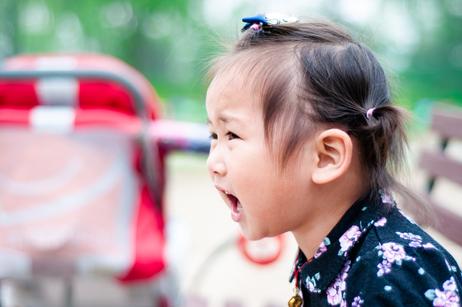Raising children is a difficult and often thankless job. If you ask any parent, however, you’ll hear them say that it’s worth it. Your child is more than just your flesh and blood – he is your life and your number-one priority. When something seems wrong, no one has to ask you to step in and find a solution. Chances are that you’ve already been thinking about what to do.
It’s not easy being a parent, but some children are more difficult than others. As a parent, however, you know the difference between your child acting out and your child acting differently. Behavioral changes are going to happen throughout your child’s life, but some changes are not normal. If you notice your child exhibiting serious behavioral issues or sudden changes, run, don’t walk to your pediatrician’s office. From there, the next step might be to visit a child psychologist. No parent wants to hear that their child has a behavioral disorder but knowing is better than not knowing because it means that you can take steps to help your child.
Finding help for your child is just one step in the process. Once you start getting his behavioral issues under control, you need to start thinking ahead. This means considering your child’s future, particularly in terms of his education. In this article, we’ll explore some of the most common behavioral issues in school-age children and talk about whether an alternative school might help your child.
This video examines diagnosing learning disabilities in children.
Common Behavioral Issues in School-Age Children
The first few years of a child’s life are fraught with changes, both physical and emotional. Children are less equipped to handle complex emotions like frustration or disappointment, so they tend to act out. Something as simple as a broken toy or a spilled cup of juice can bring on a tantrum of monumental proportions, but it doesn’t necessarily indicate a problem or a behavioral disorder.
Experts in child psychology from the University of Oxford suggest that the term “disorder” should be used with caution in children under the age of 5. Professor Frances Gardner states that there is limited evidence that problems in preschool-age children indicate problems later in life. It is also difficult to determine whether behavioral issues are really evidence of a true disorder. The first five years of a child’s life represent a time of rapid developmental change, so it is difficult to distinguish normal from abnormal behavior in children so young.
Though it is unlikely for a child under 5 to be diagnosed with a serious behavioral disorder, they may start showing symptoms that lead to a diagnosis later in life. The most common behavioral disorders diagnosed in school-age children are:
- Attention deficit hyperactivity disorder (ADHD)
- Oppositional defiant disorder (ODD)
- Autism spectrum disorder (ASD)
- Anxiety disorder
- Depression
- Bipolar disorder
- Learning disorders
- Conduct disorders (CD)
Many of these disorders are also diagnosed in adolescents and adults, but some are rarely discussed outside the realm of childhood psychology.
For example, oppositional defiant disorder (ODD) is characterized by angry outbursts, usually directed at people in authority. However, a diagnosis is not made unless the behaviors last continuously for at least six months and disrupt the child’s functioning. Conduct disorder is more serious and involves continuous behavior that can be considered cruel, either to people or animals, which may also include physical violence or criminal activity. These behaviors are very uncommon in children under age 5.
Autism spectrum disorder is another story. The term autism refers to a broad range of disorders that can affect children socially, behaviorally, and cognitively. It is considered a neurological disorder and symptoms can begin as early as infancy. The American Psychiatric Association (APA) suggests that autism spectrum disorder affects 1 in 68 children.
Though the behavioral disorders listed above are completely valid and more common than you might think, it is far more likely that your child is experiencing a temporary emotional or behavioral problem. These issues tend to pass with time and patient parenting, so do not jump to any conclusions. It is perfectly acceptable to have a conversation with your pediatrician and to seek counseling to help your child but avoid medication at all costs unless your child’s diagnosis is clinically sound and your pediatrician has sound reason to recommend medication.
If your child develops emotional or behavioral issues, it’s time for you to step up as a parent and find a way to help your child. Keep reading to learn some tips for effective parenting and for helping a child with behavioral or emotional issues.
This video reviews common learning difficulties.
What Role Does Your Parenting Play?
No matter what your child’s struggles are or how old he is, the best thing you can do as a parent is to be patient and empathetic. In the face of frustration or confusion, remain calm. And don’t be afraid to ask for help! There is no reason you and your child need to struggle alone.
Before you start sending your child to specialists, ask yourself whether something happening at home could be responsible for your child’s behavior. When children act out, there is usually a reason and sometimes it comes down to poor parenting or the child’s needs not being met in some way. Serious behavioral issues are unlikely to be the result of a particular parenting style, but it is still a good idea to know where you stand.
Here are the four main types of parenting styles:
- Authoritarian – Strict rules with no room for compromise, no input from children.
- Authoritative – Strict rules but willing to listen and cooperate. More of a democracy.
- Permissive – Few rules and few demands on children. Little to no discipline.
- Uninvolved – No rules and very little interaction. Parents are detached or neglectful.
Studies show that the authoritative style of parenting is the most likely to result in happy, well-adjusted children while uninvolved parents raise children who lack self-control and self-esteem. The thing to keep in mind here is that children need clear rules and consequences for their actions, but there should also be cooperation and understanding from the parent.
How Can You Help Your Child at Home?
Being supportive of your child is one of your biggest roles as a parent and may also be one of your biggest challenges. It may seem like your child is always changing and behavioral issues come and go. If you are concerned about your child’s behavior, talk to your pediatrician or a counselor. Doing so doesn’t mean there is something wrong with your child, it just means you are asking for help to better understand your child’s behavior and what they might mean.
There are certain behaviors that can be problematic and should be cause for concern. The following five signs indicate a potential behavioral disorder:
- Defiance – Defiant behavior is a hallmark of ADHD and ODD, often with symptoms overlapping. Excessive refusal to obey figures in authority is also apparent in cased of conduct disorders.
- Inattention – Many children struggle to focus at times, but if your child continually moves from one task to another without finishing any, it could be a sign of ADHD.
- Physical Aggression – Tantrums, negative reactions to others, and physical aggression are behavioral issues that need to be addressed. So are disobedience and destructiveness.
- Blaming Others – It’s normal for a child to want to avoid being punished, but compulsive blaming of others can be a sign of a behavioral issue.
- Antisocial Behavior – Violations of rules, defiance of authority, and disregard for others are classic signs of antisocial behavior and are common in ODD and CD diagnoses.
If your child continuously displays one or more of these behaviors, you should address the issue sooner rather than later. Issues like these can lead to stress and frustration for yourself, your child, and the whole family. Not to mention the fact that if your child does have a clinical behavior disorder, the sooner they start treatment the better.
But what do you do if your child exhibits these problem behaviors?
Your pediatrician or your child’s psychologist will be able to answer your questions and help you determine whether your child’s behavior is something to be concerned about. If it doesn’t seem to be a clinical disorder, there are still things you can do at home to manage your child’s behavior.
When your child exhibits problematic behavior, take the ABC approach:
- Identify the Antecedent. Try to determine what triggered the behavior so you can identify situations or triggers that make the behavior more likely to occur.
- Identify the Behavior – The specific action you are trying to discourage or encourage.
- Identify the Consequences. Decide what result naturally or logically follows the behavior which makes it more or less likely to recur.
If your child starts exhibiting behavioral problems, put these three steps into action. It is important to determine whether your child’s behavior has a certain trigger or whether it could be a sign of an underlying issue. The more you pay attention and the more information you gather, the better. If it becomes clear that your child’s behavioral issues are serious and are affecting his education or the education of other children, you may need to start thinking about alternative options for school.
What Benefits Do Alternative Schools Offer?
An alternative school is one designed to educate students who haven’t been successful in traditional school settings. Some alternative schools are intended for gifted children or children with a particular area of academic interest – this is generally the case with magnet schools. Alternative schools also exist, however, for children with behavioral issues.
In many cases, alternative schools for children with behavioral issues incorporate building-wide intervention programs. Teachers and staff are trained to address complex behavioral needs and the student-to-teacher ratio is generally lower to ensure that every student receives the attention they need. Many alternative schools also employ psychologists, social workers, and psychiatrists. In some cases, alternative schools are part of a stand-alone institution like a juvenile detention center.
Here are some of the potential benefits of alternative schools:
- Smaller class sizes with lower student-to-teacher ratios mean more individual attention.
- More flexible schedules, such as classes at night or online – students have more freedom to learn on their own schedule and can take advantage of other services they might need.
- Wider variety of teaching methods to help students who struggle with traditional learning methods.
- Alternative assessment and evaluation models – students might receive written evaluations instead of letter grades.
- Counseling and support groups may be available for students to address individual emotional or academic needs.
If your child’s behavioral issues are becoming disruptive for other children and for his own education, it may be time to switch schools. Making sudden changes to your child’s routine can trigger an outburst, however, so you should involve your child in the decision if possible. Read on to learn how.
Involving Your Child in the Decision
When your child is young, it is your responsibility as a parent to make decisions that will benefit your child. As your child gets older, however, you should allow him to take part in the decisions that affect him – especially significant ones like changing schools.
Most of the students in alternative schools are teenagers, so they are old enough to make their own decisions. If your child is still in elementary school, you may still be making most of the decisions for him. At middle-school age, however, the line is a little less clear but making this kind of decision for your child with no input could make matters worse instead of better. If you’re not sure what to do, sit your child down and try to have a conversation about how he feels about his current school.
After talking to your child about the possibility of switching schools, try to visit at least one option together. During your visit, take the opportunity to talk to teachers, staff, and even students to see what they think of the programs. The more you learn, the better you will be able to decide what’s best for your child and, hopefully, he will feel involved in that decision.
Tips for Choosing the Right Alternative School
Once you and your child have decided that an alternative school is the best option, how do you go about choosing one? It’s an extremely important decision, so take your time making it.
Here are some simple steps to follow:
- Ask yourself and your child to identify the problems with your child’s current school. Make a list of reasons the current school isn’t working out, so you know what to look for in the next one. It can also be a good opportunity to make sure these issues can’t be resolved instead of changing schools entirely.
- Make a list of qualities you and your child want the new school to have. You don’t have to get specific about things like student-to-teacher ratio but use the first list to identify a few key improvements you’re looking for in a new school.
- Start researching nearby schools to see what your options are. Depending on your child’s age and maturity, you might not be limited to local schools – boarding school may be an option.
- Think about the cost of the alternative school. Some alternative high schools are available for free or at a low cost. Figure out how much the school will cost and whether your child qualifies for any scholarships or grants to reduce the cost.
- Thoroughly research the school and reach out. Talk to teachers and staff at the school and, if you can, parents and students. It is important to get a well-rounded picture of the school before switching. You’ll also need to learn how to enroll and whether your child can enroll immediately or if he’ll have to wait until the next school year starts.
In addition to thinking about your options when it comes to choosing an alternative school, it doesn’t hurt to think ahead about your child’s academic future. Ask yourself whether switching your child’s school will help or hurt his chances of getting into college? An alternative school will have an impact on your child’s college admissions process, but it doesn’t have to be a negative one. One of the best things you can do as a parent is to think ahead and be prepared to help your child in every situation.
Are There Other Options to Consider?
Alternative schools can be a great option for children with emotional and behavioral issues, but they aren’t right for everyone. Fortunately, there are a few other options to consider. If your child’s issues are so extreme that he simply doesn’t do well in a school environment, homeschooling or cyber school could be the perfect alternative. If your child is old enough, you might skip the alternative school entirely and enroll your child in a GED program. No matter what you decide to do, it is important to make the decision that will most benefit your child and to stick with it once you do.
As a parent, you want what’s best for your child. Unfortunately, it is not always easy to tell what’s best, especially when your child starts exhibiting problem behavior. The best thing you can do is seek help and consider what changes you can make to help your child cope without disrupting his education.
Questions? Contact us on Facebook. @publicschoolreview














